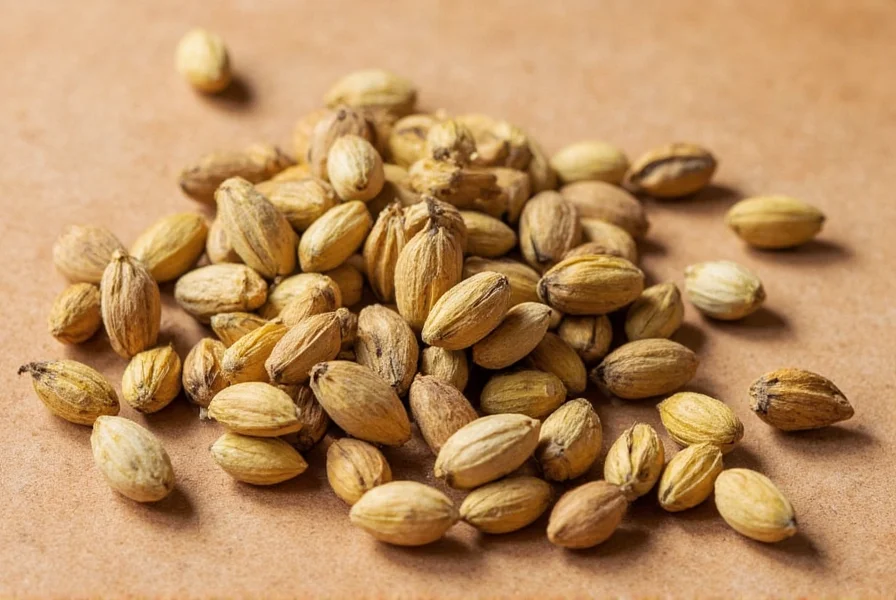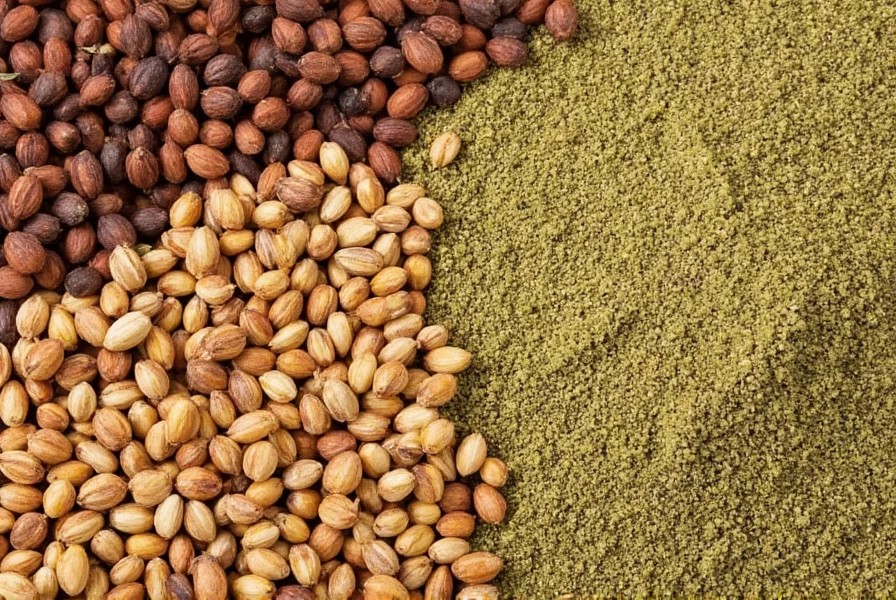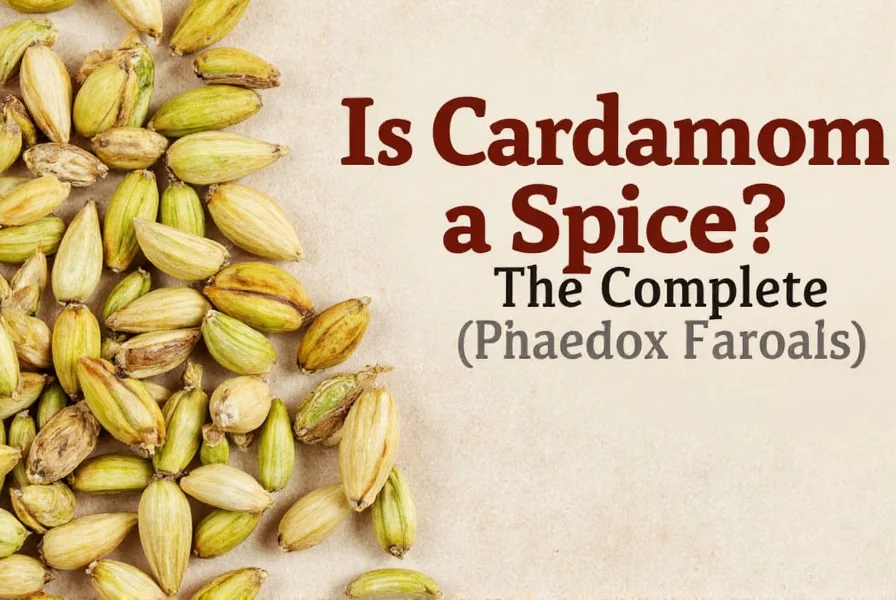Cardamom's status as a legitimate spice is unquestionable in culinary science. Unlike herbs which come from leafy green plants, spices originate from dried seeds, roots, bark, or fruit pods of tropical plants - precisely where cardamom fits as the dried fruit pod containing aromatic seeds.
What Exactly Is Cardamom?
Cardamom (Elettaria cardamomum) belongs to the Zingiberaceae family, making it a close relative of ginger and turmeric. Native to the moist forests of southern India, this perennial plant produces small green pods containing black seeds that deliver cardamom's distinctive flavor. The spice industry recognizes two primary varieties:
| Type | Origin | Flavor Profile | Common Uses |
|---|---|---|---|
| Green Cardamom | India, Guatemala | Bright, citrusy, floral | Scandinavian baking, Indian chai, Middle Eastern coffee |
| Black Cardamom | Nepal, Bhutan | Smoky, camphorous, earthy | Indian curries, Chinese five-spice powder, Tibetan cuisine |
Why Cardamom Qualifies as a True Spice
The botanical definition of a spice requires it to be a dried seed, fruit, root, or bark from tropical plants used to flavor food. Cardamom meets this criteria perfectly as the dried fruit pod of a tropical perennial. Unlike herbs which grow in temperate climates (like basil or parsley), true spices originate from tropical regions - another characteristic cardamom satisfies.
Historical evidence confirms cardamom's spice status: Ancient Egyptians used it for perfuming breath, Vikings traded it across Europe, and Ayurvedic medicine incorporated it over 3,000 years ago. Its inclusion in traditional spice blends like Indian garam masala and Middle Eastern baharat further cements its classification.

Culinary Applications of Cardamom
Chefs worldwide value cardamom for its versatility. In Scandinavian countries, ground cardamom flavors sweet buns and pastries. Indian kitchens use it whole in rice dishes like biryani or ground in curry blends. Middle Eastern coffee often receives its distinctive flavor from crushed cardamom pods.
When cooking with cardamom, consider these professional tips:
- For maximum flavor, lightly crush pods before use to release essential oils
- Green cardamom works best in sweet applications while black cardamom suits savory dishes
- Grind seeds just before use as pre-ground cardamom loses potency quickly
- Use sparingly - its intense flavor can dominate other ingredients
Nutritional Profile and Traditional Uses
While primarily valued for flavor, cardamom contains compounds with potential health benefits. It provides manganese, iron, and magnesium while containing antioxidants like cineole. Traditional medicine systems have used it for digestive support and breath freshening, though modern research continues to investigate these applications.
Unlike medicinal herbs which primarily serve therapeutic purposes, cardamom's primary function remains culinary enhancement - another hallmark of true spices versus herbs.

Cardamom in Global Cuisines
This spice bridges culinary traditions across continents. In India, it's essential in masala chai. Scandinavians incorporate it into sweet breads. Middle Eastern cultures flavor coffee with it. Even Nordic countries like Sweden and Norway consume more cardamom per capita than any other region outside South Asia.
The spice's adaptability explains its enduring popularity. Its complex flavor profile - simultaneously citrusy, floral, and slightly peppery - complements both sweet and savory applications, making it one of the most versatile spices in the culinary world.
Common Misconceptions About Cardamom
Some confuse cardamom with herbs due to its green color, but color doesn't determine classification. The critical factor is the plant part used and its origin. Cardamom comes from the fruit pod of a tropical perennial, meeting all criteria for spice classification. Another misconception suggests cardamom is only for sweet dishes, yet black cardamom's smoky profile enhances savory curries and stews.
Storage and Selection Tips
To preserve cardamom's volatile oils:
- Store whole pods in airtight containers away from light and heat
- Buy whole pods rather than pre-ground for maximum freshness
- Check for firm, green pods without discoloration
- Crush seeds only when ready to use for optimal flavor
Frequently Asked Questions
Is cardamom considered a spice or herb?
Cardamom is definitively classified as a spice. It comes from the dried fruit pods of tropical plants in the ginger family, meeting the botanical definition of a spice (dried seeds, fruit, roots, or bark from tropical plants). Herbs typically refer to leafy green plants grown in temperate climates.
What makes cardamom different from other spices?
Cardamom stands out for its complex flavor profile combining citrus, floral, and peppery notes. Unlike many single-note spices, it offers layered aromatics. It's also one of the few spices where both green and black varieties serve distinct culinary purposes - green for sweet applications, black for savory dishes requiring smokiness.
Can I substitute cardamom in recipes?
While no perfect substitute exists, you can approximate cardamom's flavor with combinations: for green cardamom, try equal parts cinnamon and coriander with a pinch of cloves; for black cardamom, use smoked paprika with a touch of star anise. However, these substitutions won't replicate cardamom's unique complexity, especially in traditional recipes where it's essential.
Why is cardamom so expensive compared to other spices?
Cardamom's high cost stems from labor-intensive harvesting (pods must be picked by hand when just ripe), limited growing regions (requires specific tropical conditions), and low yield per plant. It's the world's third most expensive spice after saffron and vanilla, with premium varieties costing up to $30 per ounce due to these production challenges.
Does cardamom have any health benefits?
Traditional medicine systems have used cardamom for digestive support and breath freshening. Modern research shows it contains antioxidants like cineole and provides manganese, iron, and magnesium. While promising, most health claims require more scientific validation. Its primary value remains culinary, with potential wellness benefits as a secondary characteristic.











 浙公网安备
33010002000092号
浙公网安备
33010002000092号 浙B2-20120091-4
浙B2-20120091-4